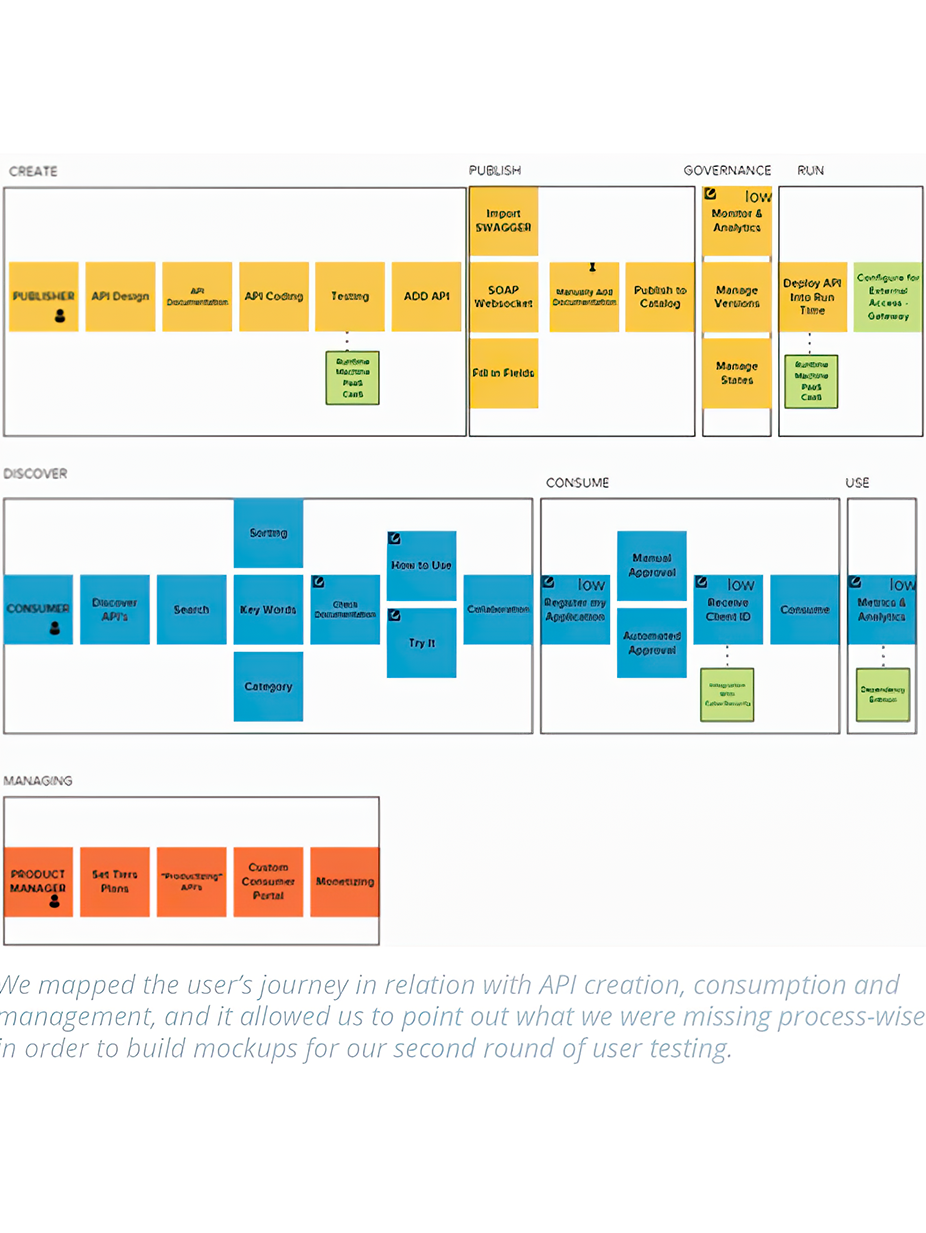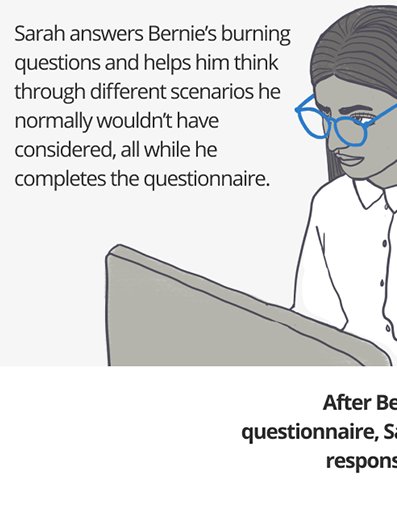Problem
Touch-points, channel inconsistencies, and gaps caused by a lack of cross-functional alignment on our estate planning product and service resulted in a disjointed, error-prone, and rigid customer and contact center experience.
Summary
I was part of the product team assigned to find optimization and innovation opportunities for LegalZoom’s estate planning experience. Low product design and UX research & strategy presence are some of the reasons that have caused contact center and fulfillment experience pain-points to accumulate without being cohesively addressed. This product gap has caused contact center teams to create workarounds to help them deliver the best customer experience. Similarly, cross-functional teams worked oftentimes in silos, many of them driving initiatives without clear ownership and little collaboration.
The research team saw these gaps as an opportunity to improve the current estate planning experience by building empathy with the customer and contact center employees. I planned and conducted remote interviews with potential customers and customers and had working sessions with contact center employees to understand their experience more in-depth.
Key Roles
Mariangela Marin, Sr. Experience Strategist - design research planning and execution
Meg McLaughlin, Experience Strategist - Interviewer
Maryanne Lee, Director of Experience Strategy - participant recruitment & synthesis
Meg McLaughlin, Experience Strategist - Interviewer
Maryanne Lee, Director of Experience Strategy - participant recruitment & synthesis
Process
We divided the findings of this research into two areas. Please keep scrolling to read through efforts to drive stakeholder alignment with the estate planning customer experience. If you want to read about the process of ideation and concept development to improve the Estate Planning product and service experience, go here (coming soon!).
Analyzing the current state
The existing family of estate planning products had several usability and functionality issues that became prioritized to be addressed immediately by the product design team. This prioritization allowed me to focus on the estate planning service ecosystem to understand the space we had to work. We started by auditing the end-to-end product experience to understand the touch-points, actors, and actions that play a part in the experience to determine what works and what needs to improve. We mapped out these elements and highlighted known customer and business pain-points.
Estate Planning Experience Flow with Users and Business Pain-Points (as of October 2020)
Defining research objectives
With a clear idea of our research space, we decided to dig into our customers’ actual experiences. To ensure what we wanted to learn from customers aligned with business objectives, I gathered stakeholders’ input and put together a research protocol to conduct remote research with prospects, customers, and abandoners. To further refine our problem space, we wanted our research to focus on understanding the emotions and goals associated with legacy planning.
1. What does it take to be ready to start one?
2. What makes the process difficult?
3. What are the questions people have and uncertainties they face before and during their journey?
Research Protocol for Estate Planning Research with Customers and Abandoners
Spending time listening to people's estate planning experiences was an essential part of identifying behaviors and mental models influencing people's perception of estate planning and creating actionable insights to improve the product and service aspects. Sharing these stories during and after the research phase with stakeholders helped build empathy for our customers and our agents’ experience serving these customers and sharpen a user-centric approach to their work.
Conducting remote research with customers & prospects. Estate Plan questionnaire walkthrough section of interview. (April 2020)
Learning from real experiences
Everyone can relate to the anxiety of thinking about what happens after you die. There are hundreds of paths one can take to start planning for death, but most people grow up thinking that estate planning isn't essential for the average person and tend to put it off to focus on other aspects of life. By 'sitting' down with people to try to understand the emotional burden they might bring along with them in this journey to plan for a future without them and analyzing and synthesizing these stories, we learned some insights that we held onto throughout our concept development process (coming soon!).
Synthesizing our learnings
Sharing research participant summaries was a great way to keep stakeholders engaged and in the loop about the research effort. Still, we needed to create an artifact that we could use to create a shared language about what we learned about our customers. To do this, we mapped each of our research participant's journeys. We synthesized them into a baseline end-to-end experience map that visualizes their emotional journey and surfaces the common key moments that take place when people navigate estate planning. These critical moments are points in time that can make or break someone's experience with LegalZoom as an Estate Planning solution provider.
Estate Planning Baseline Journey Map (June 2020)
Facilitating alignment across functions
We designed and facilitated two main workshops with key function leaders throughout the organization to socialize the estate planning Customer Journey Map and kick-off conversations about improving our customer and contact center experience.
Understanding the Contact Center Experience:
Goal:
We designed this workshop to understand how contact center (sales, customer care) pain points affect customer experience and identify patterns that align with business initiatives that might help address these pain points.
Goal:
We designed this workshop to understand how contact center (sales, customer care) pain points affect customer experience and identify patterns that align with business initiatives that might help address these pain points.
Outcome:
The initial documentation of agent pain points aligned to business initiatives allowed:
- Product team members to gain insight into areas of opportunity to improve both agent and customer experience.
-Raise awareness about efforts being led by the product team that would impact the customer experience to provide training and set expectations accordingly.
The initial documentation of agent pain points aligned to business initiatives allowed:
- Product team members to gain insight into areas of opportunity to improve both agent and customer experience.
-Raise awareness about efforts being led by the product team that would impact the customer experience to provide training and set expectations accordingly.
Aligning agent pain-points with estate planning customer journey. Workshop facilitated with MURAL via Zoom
Channel & Touchpoint Ownership & Accountability:
Goal:
We designed this workshop to discuss existing channels and touch-points in the Estate Planning experience and start identifying improvement areas. We did this by aligning channels and touch-points along the customer journey to identify gaps in the experience in terms of touchpoint hand-off and low-performance touch-points. An essential part of this workshop was to increase channel ownership visibility to start building a shared space for collaboration.
We designed this workshop to discuss existing channels and touch-points in the Estate Planning experience and start identifying improvement areas. We did this by aligning channels and touch-points along the customer journey to identify gaps in the experience in terms of touchpoint hand-off and low-performance touch-points. An essential part of this workshop was to increase channel ownership visibility to start building a shared space for collaboration.
Outcome:
The journey map was shared and implemented as a framework to align key performance indicators throughout the estate planning baseline journey.
The journey map was shared and implemented as a framework to align key performance indicators throughout the estate planning baseline journey.
This visualization helped:
- Increase accountability across the segment organization by allowing team members to have open conversations about channel ownership and touchpoint performance across the end-to-end experience
- Surface areas of opportunity to improve consistency across channels and touch-points.
- Increase accountability across the segment organization by allowing team members to have open conversations about channel ownership and touchpoint performance across the end-to-end experience
- Surface areas of opportunity to improve consistency across channels and touch-points.
Aligning channels and touch-points with estate plan customer journey. Workshop facilitated with MURAL via Zoom.
Lessons Learned
1. The first version of the customer journey map was the cornerstone of this research effort. It allowed multiple stakeholders to rally around a single source of truth and use it as an artifact to align multiple performance indicators by channel owner and across the phases of our user journey (employee and customer).
2. Planning and researching in times of a pandemic was no easy task in some aspects, especially when the main topic to be unraveled had to do with death. Fortunately, even though we couldn't connect with our research participants in person and learn from their surroundings, we could still have genuine conversations about family, money, and the guilty feeling of putting necessary things off for too long that is so relatable to many of us.
3. Similarly, having an extensive portfolio of remote facilitation tools at the tip of our fingers allowed my team and I to surpass the time zone barrier and made the task of driving stakeholder alignment easier to tackle than expected since everyone had to adapt to a new way of collaborating.



